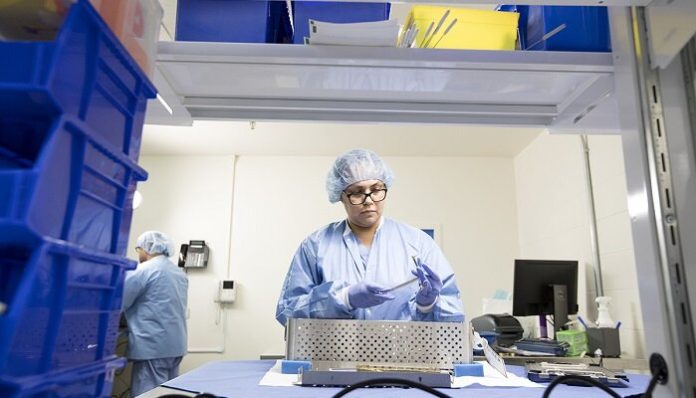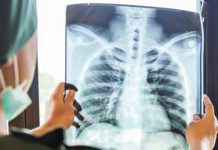Ensuring patient safety is a top priority for hospitals in Sacramento. To maintain the highest standards of healthcare, it is essential to address the challenges and embrace the latest trends in patient safety practices. One crucial aspect is the implementation of sterilizer monitoring services in hospitals. In this blog post, we will delve into the significance of sterilizer monitoring services and how they contribute to enhancing patient safety in healthcare facilities.
The Role of Sterilizer Monitoring Services
Sterilizer monitoring services play a crucial role in the healthcare industry by actively working towards preventing healthcare-associated infections (HAIs) and prioritizing patient well-being. These services encompass a wide range of activities, all aimed at ensuring the effectiveness of sterilization processes, equipment maintenance, and staff training. By leveraging the expertise of sterilizer monitoring services, hospitals and healthcare facilities can establish robust protocols that minimize the risk of HAIs, consequently promoting a safe and secure environment for patients. One of the primary functions of sterilizer monitoring service is the meticulous monitoring of sterilization processes. This involves conducting regular checks on autoclaves, sterilizers, and other sterilization equipment to verify their functionality and performance. By closely monitoring these processes, any potential issues or deviations can be promptly identified and rectified, guaranteeing that medical instruments and equipment are consistently and reliably sterilized. This level of scrutiny is essential in preventing the transmission of harmful microorganisms and reducing the occurrence of HAIs.
Improved Efficiency and Accuracy
Incorporating advanced technology in sterilizer monitoring services has revolutionized patient safety practices in hospitals. Real-time monitoring systems equipped with sensors and automation can accurately track critical parameters such as temperature, pressure, and sterilization cycles. Any deviations or malfunctions are promptly identified, enabling immediate corrective actions. This improved efficiency and accuracy in monitoring contribute to reducing the potential risks associated with inadequate sterilization.
Compliance with Regulatory Standards
Sacramento hospitals recognize the importance of complying with regulatory standards to maintain patient safety. Government bodies and accrediting organizations have established strict guidelines for sterilization practices and monitoring protocols. By employing sterilizer monitoring service in Sacramento, hospitals can ensure compliance with these standards. Regular inspections and adherence to regulations not only enhance patient safety but also build trust and confidence among patients and the community.
Continuous Staff Training
A well-trained and knowledgeable healthcare workforce is paramount when it comes to maintaining and enhancing patient safety within hospitals. In the bustling healthcare environment, hospitals recognize the critical importance of investing in regular education and training programs for their healthcare personnal. These programs are specifically designed to equip healthcare providers with comprehensive instruction on sterilization techniques, infection prevention protocols, and the proper utilization of monitoring equipment. By prioritizing continuous staff training, hospitals in Sacramento empower their healthcare professionals with the necessary knowledge and skills to ensure effective sterilization practices, thereby minimizing the risk of healthcare-associated infections (HAIs).
The education and training initiatives implemented in Sacramento hospitals are multifaceted and encompass a wide array of areas related to sterilization and infection control. Healthcare professionals receive comprehensive instruction on the various sterilization techniques utilized in healthcare settings, such as steam sterilization, ethylene oxide sterilization, and hydrogen peroxide sterilization. They are trained on the proper handling, loading, and packaging of medical instruments and equipment to facilitate optimal sterilization outcomes. By understanding the intricacies of each sterilization method and adhering to established protocols, healthcare providers can contribute to the prevention of HAIs and ensure the safety of patients.
Data Analytics for Continuous Improvement
Data analytics plays a crucial role in identifying areas for improvement in patient safety. Sacramento hospitals can leverage data from sterilizer monitoring services to analyze trends, detect potential risks, and implement proactive measures. By utilizing data-driven insights, hospitals can continuously improve their sterilization processes, streamline workflows, and reduce errors. This proactive approach contributes to a safer healthcare environment for patients.
Conclusion
Sterilizer monitoring services have emerged as a vital component of patient safety practices in Sacramento hospitals. By prioritizing the implementation of these services, healthcare facilities in Sacramento can significantly reduce the risk of healthcare-associated infections and enhance patient well-being. Through advanced technology, compliance with regulatory standards, continuous staff training, and data-driven improvements, hospitals in Sacramento demonstrate their commitment to providing a safe and secure healthcare environment for every patient.























